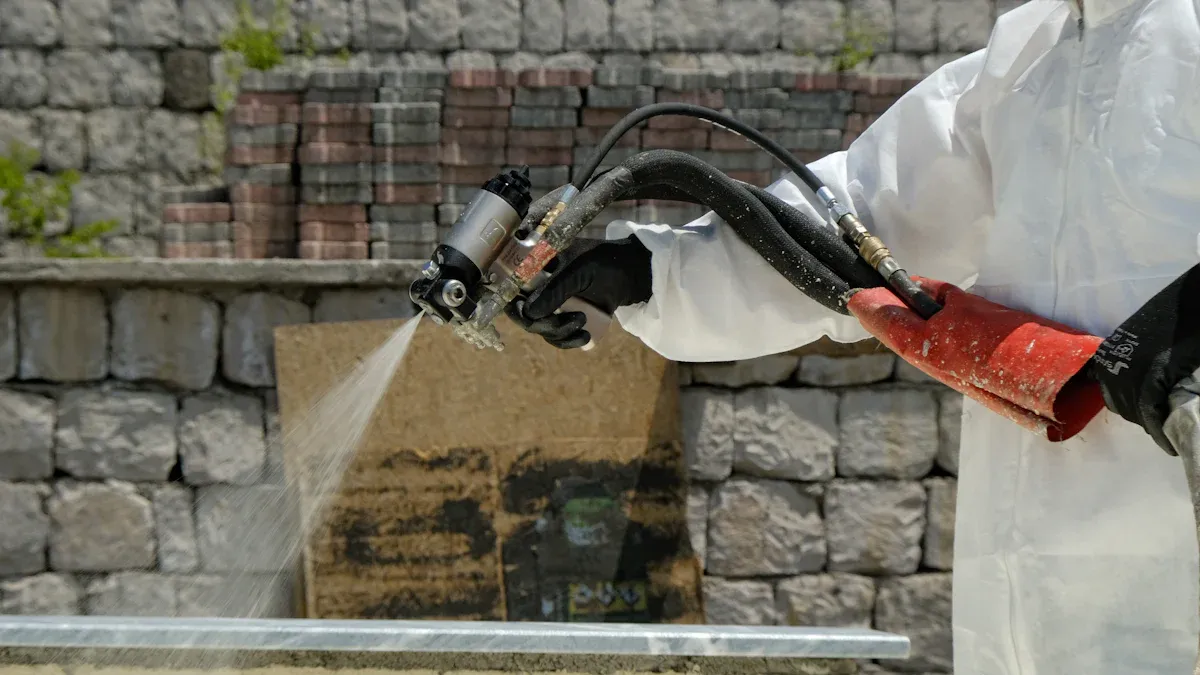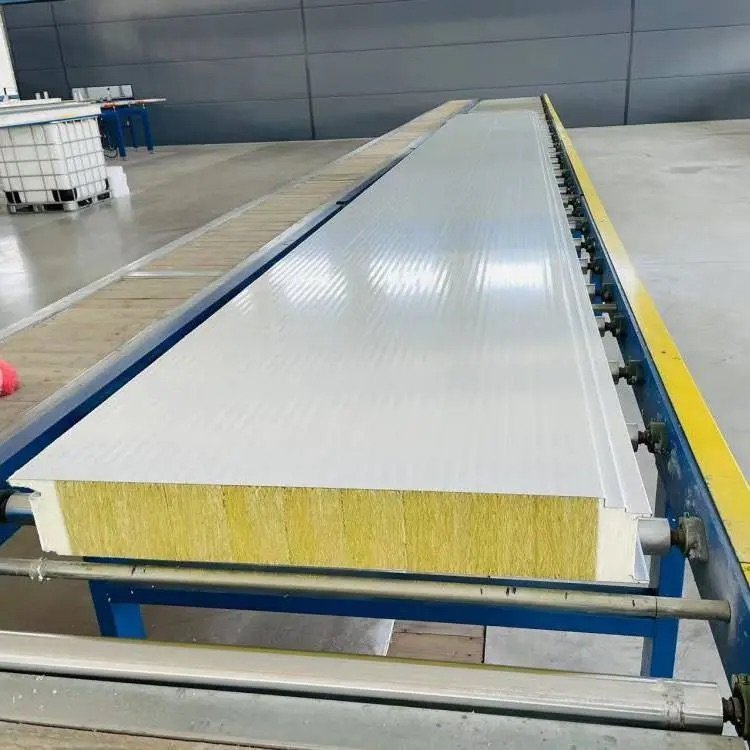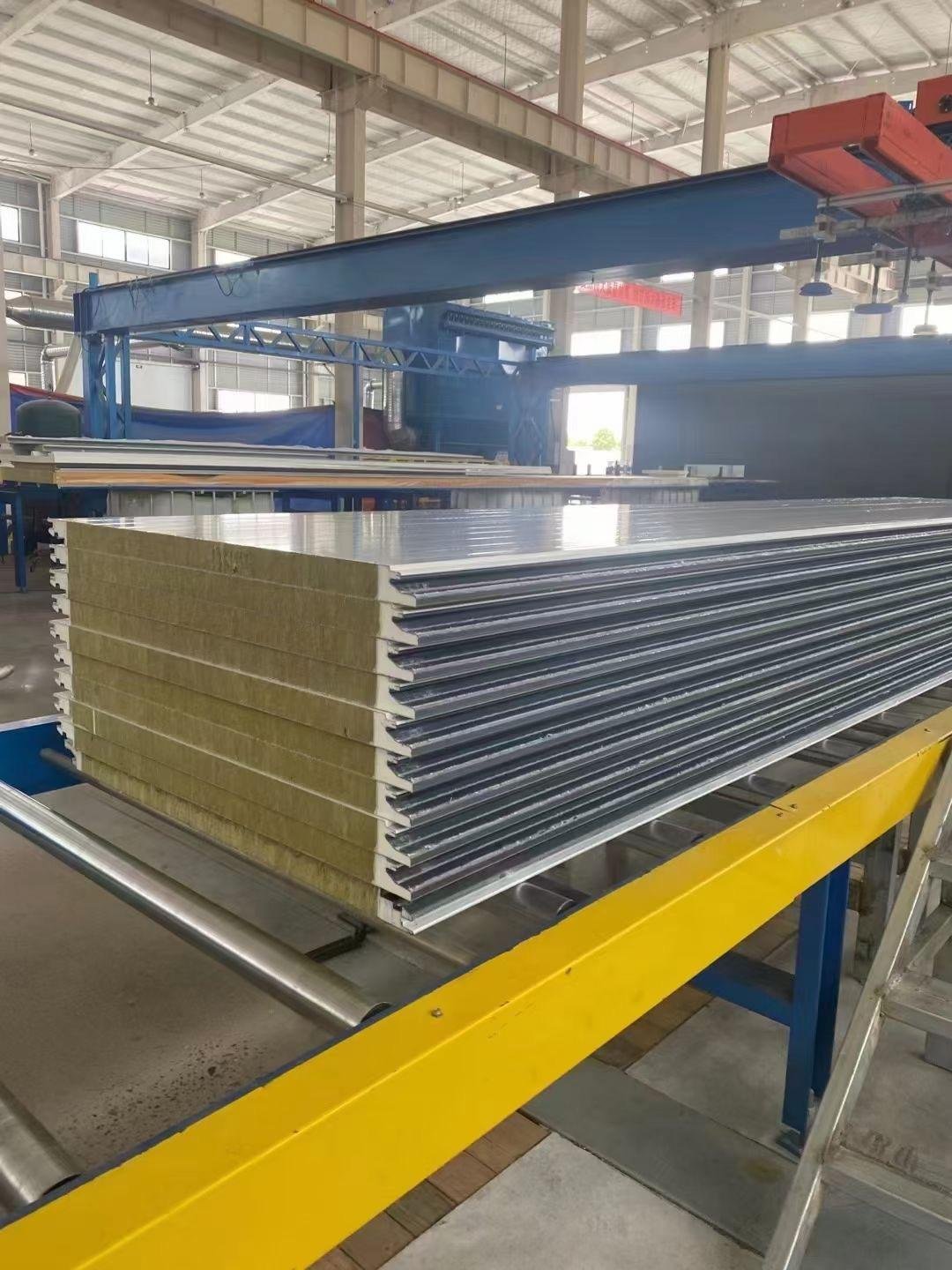
PU sandwich panels are a new building material. They give great thermal insulation and save energy. These panels have a polyurethane core that stops heat transfer. This keeps indoor spaces comfy in all seasons. For example, a building in New York City cut heating and cooling costs by 30% after using these panels. This shows they can save a lot of energy money. Using PU sandwich panels helps the environment and saves money over time.
Key Takeaways
PU sandwich panels keep buildings warm in winter and cool in summer.
They can lower heating and cooling costs by up to 30%.
These panels save money on energy bills.
PU panels are lightweight, making them simple to install.
This saves time and reduces labor costs.
They help cut carbon emissions, supporting green building practices.
PU panels work well for homes, offices, and factories.
What Are PU Sandwich Panels?
Composition and Structure
Polyurethane (PU) foam core
PU sandwich panels have a core made of polyurethane foam. This foam is light and has tiny, closed cells. It blocks heat, keeping indoor spaces comfortable. The foam also stops water from soaking in, avoiding mold. This makes it perfect for places with high humidity or changing temperatures.
Outer layers: Metal or rigid materials
The outer layers are usually made of steel, aluminum, or stainless steel. These layers protect against water and vapor, stopping condensation. They also make the panels strong enough to handle bad weather. Together with the foam, these layers create a lightweight but sturdy design, like an I-beam.
Layer Type | Material Composition | Functionality |
|---|---|---|
Core Layer | Light foam (PU foam) | Gives insulation and keeps the panel strong. |
Face Sheets | Thin metal layer (steel, aluminum) | Adds strength and resists bending. |
Overall Structure | Combines strength with being lightweight. |
Functionality
Insulation through low thermal conductivity
PU sandwich panels keep heat from moving through them. The foam core has low thermal conductivity, which helps save energy. It keeps buildings warm in winter and cool in summer. The foam’s closed cells make it even better at insulating, cutting heating and cooling costs.
Lightweight yet durable design
These panels are strong but not heavy. This makes them easy to carry and install, saving time and money. They last a long time and resist mold, mildew, and rot. Even in extreme weather, they stay strong and reliable.
Tip: PU sandwich panels work well for many uses, like homes or factories. They are a great mix of insulation and strength, making them dependable for building projects.
Thermal Insulation Properties

How PU Sandwich Panels Provide Thermal Insulation
Low thermal conductivity of PU foam
PU sandwich panels are great at keeping heat out. This is because of their polyurethane foam core. The foam has very low thermal conductivity, between 0.022 and 0.028 W/mK. This is much lower than brick (0.49-0.87 W/mK) or concrete block (0.35-0.79 W/mK). The foam has tiny, closed cells that trap air. This stops heat from moving through and keeps indoor spaces comfortable.
Key performance highlights:
PU foam: 0.022 – 0.028 W/mK.
Brick: 0.49 – 0.87 W/mK.
Concrete block: 0.35 – 0.79 W/mK.
This low thermal conductivity helps buildings stay warm in winter. It also keeps them cool in summer, cutting down on heating and cooling needs.
Prevention of heat transfer (conduction, convection, radiation)
PU sandwich panels block heat in three ways: conduction, convection, and radiation. The foam core stops conduction by blocking heat flow. Its airtight design prevents convection by stopping air movement inside. The outer layers reflect heat from the sun, reducing radiation. These features work together to keep indoor spaces energy-efficient and stable.
Note: PU panels are perfect for places with big temperature changes. They block all types of heat transfer, making them a great insulation choice.
R-Values and Efficiency
Importance of R-values in insulation
R-values show how well a material blocks heat. Higher R-values mean better insulation. PU sandwich panels have an R-value of 50, which is very high. This makes them one of the best materials for keeping buildings thermally stable, even in tough climates.
PU panels’ R-values compared to other materials
PU panels are better than most other insulation materials. They have higher R-values and lower thermal conductivity. Here’s a comparison:
Insulation Type | R-value | Thermal Conductivity (λ) |
|---|---|---|
Polyurethane | 50 | 0.022 – 0.028 W/mK |
XPS | 33.5 | 0.03 W/m²K |
EPS | N/A | N/A |
Brick | N/A | 0.49 – 0.87 W/mK |
Concrete Block | N/A | 0.35 – 0.79 W/mK |
PU panels keep their high R-values even in extreme weather. This makes them better for saving energy than materials like XPS or EPS.
Tip: Using PU sandwich panels can save energy and lower heating costs.
Energy Efficiency Benefits
Saving Money and Using Less Energy
Cut heating and cooling costs
PU sandwich panels help lower your energy bills. They reduce heat loss in winter and heat gain in summer. The foam core keeps your home comfy without overworking your HVAC system. These panels have a U-value of just 0.02 W/m²K, meaning they lose very little heat. For example, at 123 Manhattan Avenue, these panels cut heating and cooling costs by 30%.
Why PU sandwich panels save energy:
Better insulation means less energy use.
HVAC systems work less, saving money.
Keep indoor temperatures steady
These panels block heat from moving in or out. The foam core and outer layers stop heat conduction, convection, and radiation. This keeps your home warm in winter and cool in summer. You’ll notice fewer temperature changes, which saves energy and makes your space more comfortable.
Tip: Want to save energy and stay comfy? PU sandwich panels are a smart pick.
Helping the Environment
Lower carbon emissions
PU sandwich panels help reduce your building’s carbon footprint. They save energy by cutting heating and cooling needs. This means fewer greenhouse gases are released. Their ability to keep temperatures steady also helps conserve energy.
How PU sandwich panels help the planet:
Fewer emissions from energy use.
Less energy needed for heating and cooling.
Support green building goals
PU sandwich panels fit well with eco-friendly construction. They stop heat loss and gain, improving energy efficiency. While making them may raise concerns, their long-term benefits are worth it. They last a long time and provide great insulation, making them a good choice for sustainable buildings.
Note: Using PU sandwich panels helps fight climate change and supports green building efforts.
Applications of PU Sandwich Panels

Industrial and Commercial Uses
Cold storage and warehouses
PU sandwich panels are great for cold storage and warehouses. They keep temperatures steady, which is important for food and medicine. The foam core stops heat transfer, saving energy. This makes them perfect for industries like e-commerce and logistics.
Application Area | Performance Metrics | Key Drivers |
|---|---|---|
Cold Storage | Keeps temperatures steady, saves energy | Growth in food and medicine industries, e-commerce needs efficient storage |
Factories and production facilities
Factories use PU sandwich panels for their strength and energy savings. These panels keep indoor temperatures stable, helping workers and protecting machines. Their lightweight design makes them easy to install, saving time and money.
Tip: Use PU sandwich panels in factories or warehouses to save energy and improve conditions.
Residential Applications
Insulated walls and roofs
PU sandwich panels are great for home walls and roofs. They keep homes warm in winter and cool in summer, cutting energy costs. They are strong and last a long time, making them a good choice for homes.
Prefabricated homes
Prefabricated homes often use PU sandwich panels because they are light and easy to use. These panels make building faster and save energy. They are also eco-friendly and fit well with green living trends.
Application Area | Performance Metrics | Key Drivers |
|---|---|---|
Residential Sector | Great insulation, strong, energy-saving | Green living trends, affordable housing, fast building methods |
Specialized Uses
Refrigerated transport
PU sandwich panels are key for refrigerated transport. They keep goods cold during travel, protecting food and medicine. This makes them very useful for delivery and pharmaceutical industries.
Why PU sandwich panels are great for refrigerated transport:
Keep goods cold during travel.
Protect quality of items.
Cleanrooms and laboratories
Cleanrooms and labs need controlled spaces, and PU sandwich panels help. They stop contamination and keep temperatures steady. These features make them perfect for research and high-tech work.
Note: PU sandwich panels are flexible and work well for special uses like refrigerated transport and cleanrooms.
Comparing PU Panels with Other Insulation Materials
PU Panels vs. EPS (Expanded Polystyrene)
Thermal performance and durability
PU panels insulate better than EPS. Their thermal conductivity is as low as 0.022 W/mK. EPS has a higher range of 0.034 to 0.038 W/mK. This means PU panels keep indoor spaces more comfortable. They work well even in extreme weather. PU panels also have higher R-values, making them more energy-efficient.
PU panels are stronger and last longer than EPS. They resist water and don’t break down easily. EPS panels are less dense and can get damaged more quickly. This makes EPS less effective for insulation in tough conditions. PU panels are sturdier, making them better for long-term projects.
Moisture resistance
PU panels handle moisture better than EPS. They have a special design with a water-resistant core and outer layers. This stops mold and keeps the panels in good shape. EPS panels also resist water because of their closed-cell structure. However, they may need extra coatings in very wet areas to stay stable.
PU Panel Advantages:
Water-resistant layers stop mold and condensation.
Stay durable even in wet conditions.
EPS Panel Advantages:
Closed cells block water.
Work well in humid areas with extra coatings.
PU Panels vs. Mineral Wool
Fire resistance and soundproofing
Mineral Wool is better for fire safety. It doesn’t burn, making it great for fire resistance. PU panels are not as fireproof but often include fire-retardant materials to meet safety rules.
For soundproofing, Mineral Wool is the winner. Its dense structure blocks noise better than PU panels. PU panels still provide some sound insulation, thanks to their foam core.
Weight and ease of installation
PU panels are light and simple to install. This saves time and money during construction. Mineral Wool is heavier and harder to work with. It takes more effort and increases building costs.
Feature | PU Panels | Mineral Wool |
|---|---|---|
Fire Resistance | Fire-retardant materials | Doesn’t burn |
Soundproofing | Decent | Excellent |
Weight | Light | Heavy |
Installation | Easy | Hard |
Tip: Choose PU panels for quick installation and energy savings. Pick Mineral Wool for fire safety and better soundproofing.
PU sandwich panels provide great insulation and save energy. They cut heating and cooling costs, making them very efficient. Their light but strong design works well for homes and factories.
Why pick PU sandwich panels?
They save energy, lower carbon emissions, and support eco-friendly building.
Want a smarter, greener building? PU panels are a smart option. Try them in your next project to enjoy lasting benefits.
FAQ
What are PU sandwich panels made of?
PU sandwich panels have foam inside and metal on the outside. The foam keeps heat out, and the metal makes them strong. Together, they are light but tough, perfect for saving energy in buildings.
How do PU sandwich panels save energy?
PU panels stop heat from moving through them. This keeps rooms warm in winter and cool in summer. You’ll need less energy for heating or cooling, which saves money and helps the planet.
Are PU sandwich panels suitable for humid climates?
Yes, PU panels handle moisture well. The foam and metal layers stop water and mold. This makes them great for places with high humidity or changing weather.
Can PU sandwich panels be used in residential buildings?
Yes! PU panels are great for walls, roofs, and prefab homes. They save energy, lower heating and cooling costs, and last a long time. They’re ideal for eco-friendly and affordable housing.
How do PU sandwich panels compare to other insulation materials?
PU panels are better than many materials like EPS and XPS. They insulate better, are lighter, stronger, and resist water. This makes them useful for many building projects.







